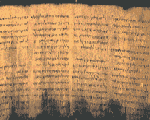




Provisions
THe Nuclear Suppliers' Group consists of 30 nuclear suppliers and seeks to control exports of nuclear materials, equipment, and technology, both dual-use and specially designed and prepared. Russia is a member of this group and therefore bound by its controls, though other former Soviet nuclear republics -- particularly Belarus, Ukraine, and Kazakhstan -- along with other major suppliers like China and Brazil are not. The United States views observance of the NSG guidelines by these states as an important means of stemming the flow of nuclear materials and technologies.The NSG Guidelines include a number of important conditions that help promote nuclear cooperation under sound nonproliferation arrangements. For Trigger List exports, the NSG Guidelines currently require, for example, (1) an agreement between the International Atomic Energy Agency and the recipient state requiring the application of safeguards on all fissionable materials in its nuclear activities (also known as "full-scope IAEA safeguards") -- not just on the exported items, (2) physical protection against unauthorized use of transferred materials and facilities, and (3) restraint in the transfer of sensitive facilities, technology, and weapons-usable materials, i.e., exports that could contribute to the acquisition of plutonium or highly enriched unranium.
In 1992, spurred on by revelations about Iraq's illicit nuclear weapons program, the NSG adopted controls on nuclear-related dual-use goods, for example those with both nuclear and non-nuclear applications, that could make a major contribution to unsafeguarded nuclear activities or to nuclear explosive activities. The NSG Dual-Use Guidelines prohibit the transfer of controlled items for use in a non-nuclear weapon state in a nuclear explosive activity or an unsafeguarded nuclear fuel-cycle activity, or when there is an unacceptable risk of diversion to such an activity. To reduce the risk of diversion, the Guidelines require recipients to provide assurances 1) specifying how transferred items will be used, 2) stating that they will not be used for proscribed activities, and 3) stating that the suppliers consent will be obtained before any retransfers of the items. The NSG also agreed to control technology related to both Trigger List and controlled dual-use goods. By controlling technical information and assistance for the development, production, and use of controlled goods, NSG members limit the ability of proliferant states to use technical expertise or blueprints as part of a nuclear weapons program.
Status
NSG members encourage all countries to adhere to the NSG Guidelines as the basis for responsible nuclear export policy. New members must adhere to the guidelines and are accepted as members only upon the unanimous agreement of all current members. Although suppliers consulted regularly on a bilateral basis, the NSG did not meet throughout the 1980s.
The United States proposed the formation of a Nuclear Suppliers Group following the 1974 nuclear explosion by India. The primary purpose was to ensure that suppliers uniformly applied a comprehensive set of guidelines to ensure that nuclear cooperation did not contribute to proliferation, and to involve a key non-NPT supplier, France. The NSG grew from seven to 15 countries by early 1978 when its guidelines and control list were published. The first 15 NSG members exchanged bilateral notes accepting the guidelines and control list and communicated these commitments to the IAEA Director General.The NSG resumed meeting multilaterally in The Hague in March 1991 and has held annual plenaries since then. These meetings have led to a progressive strengthening of NSG controls and an expansion of its membership to 34, including as its most recent members Brazil, the Republic of Korea, and Ukraine. The NSG holds a plenary meeting each year in April, along with a number of working group meetings. The working group on Conditions of Supply, established to review and strengthen the NSG Guidelines, completed its work in 1995. The Helsinki plenary adopted several proposed changes in the guidelines, including the agreement to control technologies related to trigger list items. The Helsinki plenary also agreed to establish a separate working group to facilitate the exchange of information among NSG members. In addition to annual plenary sessions, the NSG now holds two consultations annually on its arrangement to control nuclear-related dual-use commodities and technology. This dual-use control list includes materials, equipment, and technology that can be used both for nuclear weapons and fuel-cycle activities and for other, non-nuclear purposes. The working group established to refine the NSG dual-use control list completed its work in 1994, and agreed changes were adopted at the plenary in Helsinki, Finland.
Documents
The NSG Guidelines are published by the IAEA in its Information Circular series. INFCIRC/254 Part 1 contains the Guidelines for Nuclear Transfers, and INFCIRC/254 Part 2 contains the Guidelines for Transfers of Nuclear-Related Dual-Use Equipment, Material and Related TechnologyNews
Chronological archive of news reports, commentary analysis and other related material.Related Web Sites
